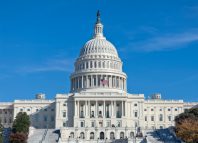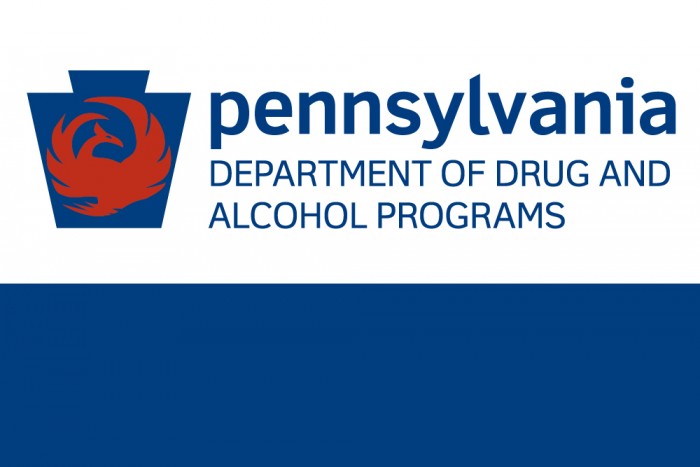Yesterday, the Department of Drug and Alcohol Programs’ (DDAP) Secretary Jen Smith virtually joined Pennsylvania Attorney General Josh Shapiro, Butler County Commissioner and County Commissioners Association of Pennsylvania Board Chairman Kevin Boozel, and Berks County Council on Chemical Abuse to discuss the incoming opioid settlement funding in Pennsylvania.
Jason Snyder
DDAP Issues Recovery Housing Bulletin & Letter to Stakeholders
The Pennsylvania Department of Drug and Alcohol Programs (DDAP) released Information Bulletin 01-22 today. The purpose of the bulletin is to remind all recovery houses in Pennsylvania, as well as entities who refer individuals to recovery houses, of several requirements of the recovery house law (Act 59 of 2017). A letter from DDAP Secretary Jennifer Smith communicating details of the bulletin was issued today to all stakeholders, as well.
Wolf Administration Announces Funding Opportunity for Recovery Houses Seeking Licensure
Today, the Departments of Drug and Alcohol Programs (DDAP) and Community & Economic Development (DCED) announced the availability of more than $1 million in grant funding for recovery houses to provide safe housing for individuals in recovery from a substance use disorder (SUD).
Read the press release for more details about the application process.
DDAP Waivers Extended With Signing of Act 14
With Senate Bill 1019 passed into law as Act 14, the Department of Drug and Alcohol’s (DDAP) regulatory suspensions are also extended. These regulatory suspensions are “related to federal exemptions granted under the federal public health emergency declaration” until “the last day federal exemptions granted under the federal public health emergency declaration are authorized.” In addition to three DDAP regulatory suspensions, one additional regulation from the Department of State, also relevant to the field, is included in the chart below and also remains suspended.
| Statute/Regulation | Statute/Regulation Purpose |
Waiver Benefit/Explanation |
|
28 Pa. Code § 715.16(e) |
Prohibits narcotic treatment programs (NTPs — methadone clinics) from permitting a patient to receive more than a 2-week take-home supply of medication | In response to COVID-19, SAMHSA is allowing up to 28 days of take-home medications for patients on stable dosages, if the physician deems appropriate. |
| 28 Pa. Code § 715.9(a)(4) | Requires NTPs to make a face-to-face determination before admission to treatment, for those clients who will receive buprenorphine treatment. | In response to COVID-19, SAMHSA is allowing initial evaluations for a patient who will be treated with buprenorphine to be completed via telehealth. |
| 28 Pa. Code § 715.6(d) | Requires NTPs to have narcotic treatment physician services onsite. | In response to COVID-19, SAMHSA is allowing initial evaluations for a patient who will be treated with buprenorphine to be completed via telehealth. |
| 49 Pa. Code § 16.92(b)(1)
(Department of State) |
Before a patient can be prescribed any controlled substance in Pennsylvania, a person licensed to practice medicine and surgery in the commonwealth, or otherwise licensed or regulated by the State Board of Medicine, must take an initial medical history and conduct an initial physical examination, unless emergency circumstances justify otherwise. |
In response to COVID-19, the Department of State suspended the initial medical history and physical examination requirement specifically for the treatment of opioid-use disorder with buprenorphine. |
In November 2021, the Substance Abuse and Mental Health Services Administration (SAMHSA) announced that the methadone take-home flexibilities will be extended for one year after the eventual expiration of the federal COVID-19 Public Health Emergency. DDAP has submitted its written concurrence with this exemption. SAMHSA has also indicated that they are currently considering mechanisms to make this flexibility permanent. Narcotic treatment programs do not need to do anything additional at this time to continue taking advantage of this flexibility.
Similarly, the U.S. Drug Enforcement Administration (DEA) also announced last week that they are currently working to make their teleprescribing regulations permanent. DDAP will continue to provide additional information and guidance as it becomes available.
If you have any further questions, please contact the Bureau of Program Licensure at (717) 783-8675 or via email.
D&A Committee Meeting Update for April 5, 2022
The time for the Drug & Alcohol Committee meeting on Tuesday, April 5, 2022, has been changed from 9:00 am to 9:30 am. Please see the full schedule below:
- 9:30 am–11:00 am – This portion of the meeting will be for provider members only.
- 11:00 am–12:00 pm – This portion of the meeting will be for all members.
Instructions for participating in each portion of the meeting will be sent the day prior. RCPA Staff will ensure that everyone receives the appropriate registration instructions.
If you haven’t done so yet, please register for the meeting here. If you have any questions, please contact Jason Snyder.
Signed Federal Appropriations Act Increases DDAP’s FY 2023 Budget by At Least $60M
With this week’s signing of the federal Consolidated Appropriations Act of 2022, the Pennsylvania Department of Drug and Alcohol Programs (DDAP) expects its budget for Fiscal Year (FY) 2023 to be at least equal to the current year’s budget of $378 million. Before the signing of the act, DDAP’s budget was $317 million. The difference was the result of a $60 million gap in a state opioid response (SOR) grant that has been restored. The majority of DDAP’s funding comes from the federal government, as opposed to state dollars.
As part of the Federal Appropriations Act, $3.9 billion has been budgeted for substance use treatment, including continued funding for opioid prevention and treatment, recovery, and tribal focused treatment efforts. This includes $1.85 billion for the Substance Abuse Prevention and Treatment Block Grant (SABG); $1.525 billion for SOR Grants; $34.9 million for Pregnant & Postpartum Women; $13 million for Building Communities of Recovery; and $101 million for Medication Assisted Treatment.
In its Senate Appropriations Hearing yesterday, DDAP said that, although the exact amount of Pennsylvania’s SOR grant for FY 2023 was not yet know, it expected it to be at least as much as the current year’s grant, which is $178 million.
$22.6M Available to Addiction Treatment Providers Through Federal MAT-PDOA Grant
This week, SAMHSA announced the availability of $22.6 million to public and private non-profit entities through its Medication-Assisted Treatment – Prescription Drug and Opioid Addiction (MAT-PDOA) grant. Applications are due Friday, April 29. More information about applying for the grant is available on SAMHSA’s website.
National Council to Host Overdose Prevention Webinar — March 21
The National Council for Mental Wellbeing will host Overdose Prevention Across the Continuum of Care: Strategies from the Field, the first of a two-part series, from 3:30 pm–5:00 pm on Monday, March 21. You can register for the event here.
Presenters will discuss a range of evidence-based strategies that have been successfully implemented across the continuum of care to prevent overdose and improve the health of people who use drugs and have substance use disorders, including those with co-occurring serious mental illness.
DDAP Budget Hearing With Senate Appropriations Committee Set for Today
The Senate Appropriations Committee will meet for a budget hearing with the Department of Drug and Alcohol Programs (DDAP) at 2:30 pm today, March 16. The budget hearing will be livestreamed. Please note that RCPA provider members received an email from RCPA earlier this week that incorrectly stated the hearing was at 10:00 am today.
For Fiscal Year 2022/2023, the governor is budgeting a total of $317 million for DDAP, which is a 16 percent reduction over the current fiscal year’s budget of $379 million. The decrease is due to a $60 million reduction in federal State Opioid Response dollars.
More details of DDAP’s budget are available in DDAP’s Bluebook. In addition, a previous communication from RCPA about DDAP’s budget ahead of its House Appropriations Committee provides additional detail about the $317 million budget.
OIG Clears the Way for Use of Financial Incentives in Treating SUD Within the Medicaid Population
The Office of Inspector General (OIG) within the U.S. Department of Health and Human Services (HHS) has issued a favorable advisory opinion regarding contingency management (CM), an evidence-based approach for treating substance use disorders (SUD) that uses financial incentives to reward healthy behavior, such as abstinence and treatment retention, according to the National Council for Mental Wellbeing.
CM has been shown to be an effective approach for those with SUD in more than 100 randomized controlled trials over 50 years. Evidence shows it can double abstinence rates across opioids, stimulants, alcohol, tobacco, and nicotine, compared to usual care alone. It is the most effective and most evidence-based treatment for stimulant use disorders. In 2021, the Biden Administration declared advancing CM among its drug policy priorities.
The advisory opinion clears the way for CM for routine use in publicly funded substance use treatment programs and healthcare facilities under federal reimbursement, including Medicaid.















